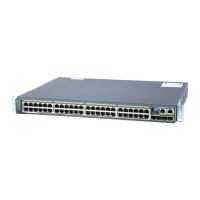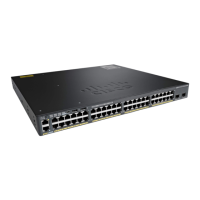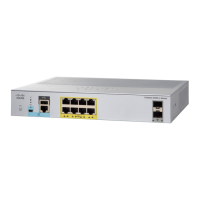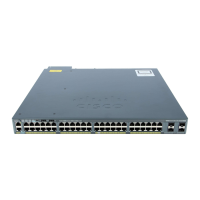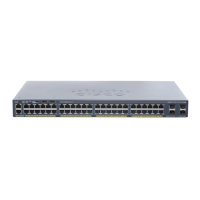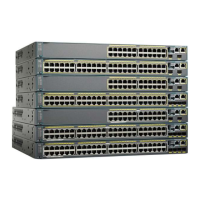© 2005 Cisco Systems, Inc. All rights reserved.
Important notices, privacy statements, and trademarks of Cisco Systems, Inc. can be found on cisco.com.
Page 6 of 15
Integrated Cisco IOS
®
Software Features for
Bandwidth Optimization
• Per-port broadcast, multicast, and storm control prevents faulty end stations from degrading overall systems
performance.
• IEEE 802.1d Spanning Tree Protocol support for redundant backbone connections and loop-free networks
simplifies network configuration and improves fault tolerance.
• PVST+ allows for Layer 2 load sharing on redundant links to efficiently use the extra capacity inherent in
a redundant design.
• IEEE 802.1s Multiple Spanning Tree Protocol allows a spanning-tree instance per VLAN, enabling Layer 2 load
sharing on redundant links.
• Egress committed rate (ECR) guarantee provides load balancing and redundancy.
• Local Proxy Address Resolution Protocol (ARP) works in conjunction with Private VLAN Edge to minimize
broadcasts and maximize available bandwidth.
• VLAN1 minimization allows VLAN1 to be disabled on any individual VLAN trunk link.
• VLAN Trunking Protocol (VTP) pruning limits bandwidth consumption on VTP trunks by flooding broadcast traffic
only on trunk links required to reach the destination devices.
• Internet Group Management Protocol (IGMP) version 3 snooping provides fast client joins and leaves of
multicast streams and limits bandwidth-intensive video traffic to only the requestors.
• IGMP filtering provides multicast authentication by filtering out no subscribers and limits the number of
concurrent multicast streams available per port.
• Multicast VLAN registration (MVR) continuously sends multicast streams in a multicast VLAN while isolating e
streams from subscriber VLANs for bandwidth and security reasons.
• Standard 802.1p CoS and DSCP field classification are provided, using marking and reclassification on a per-
packet basis by source and destination IP address, source and destination MAC address, or Layer 4 TCP or
UDP port number.
• Cisco control-plane and data-plane QoS ACLs on all ports help ensure proper marking on a per-packet basis.
• Four egress queues per port enable differentiated management of up to four traffic types across the stack.
• SRR scheduling ensures differential prioritization of packet flows by intelligently servicing the ingress and egress
queues.
• Weighted tail drop (WTD) provides congestion avoidance at the ingress and egress queues before a disruption
occurs.
• Strict priority queuing guarantees that the highest-priority packets are serviced ahead of all other traffic.
• There is no performance penalty for highly granular QoS functions.
• The Cisco CIR function guarantees bandwidth in increments as small as 1 Mbps.
• Rate limiting is provided based on source and destination IP address, source and destination MAC address,
Layer 4 TCP and UDP information, or any combination of these fields, using QoS ACLs (IP ACLs or MAC
ACLs), class maps, and policy maps.
• Asynchronous data flows upstream and downstream from the end station or on the uplink are easily managed
using ingress policing and egress shaping.
• Up to 64 aggregate or individual polices are available per Fast Ethernet or Gigabit Ethernet port.
Networkwide Security
Features
• IEEE 802.1x allows dynamic, port-based security, providing user authentication.
• IEEE 802.1x with VLAN assignment allows a dynamic VLAN assignment for a specific user regardless of where
the user is connected.
• IEEE 802.1x with voice VLAN permits an IP phone to access the voice VLAN irrespective of the authorized or

